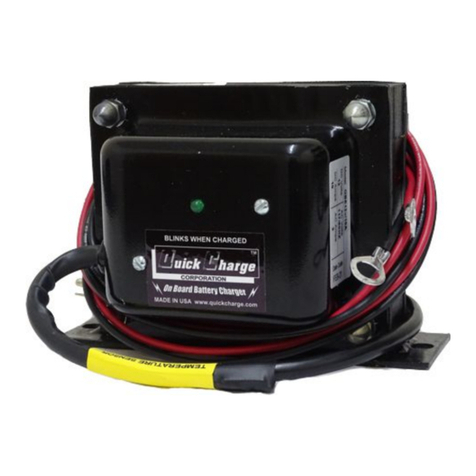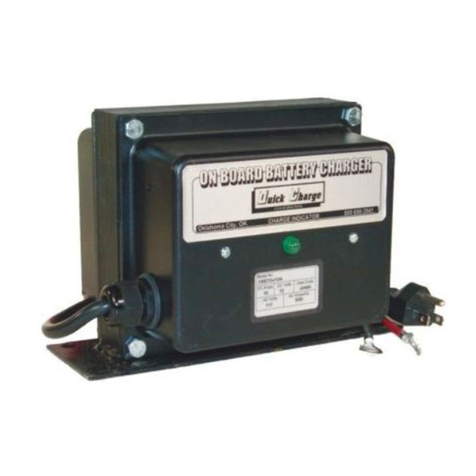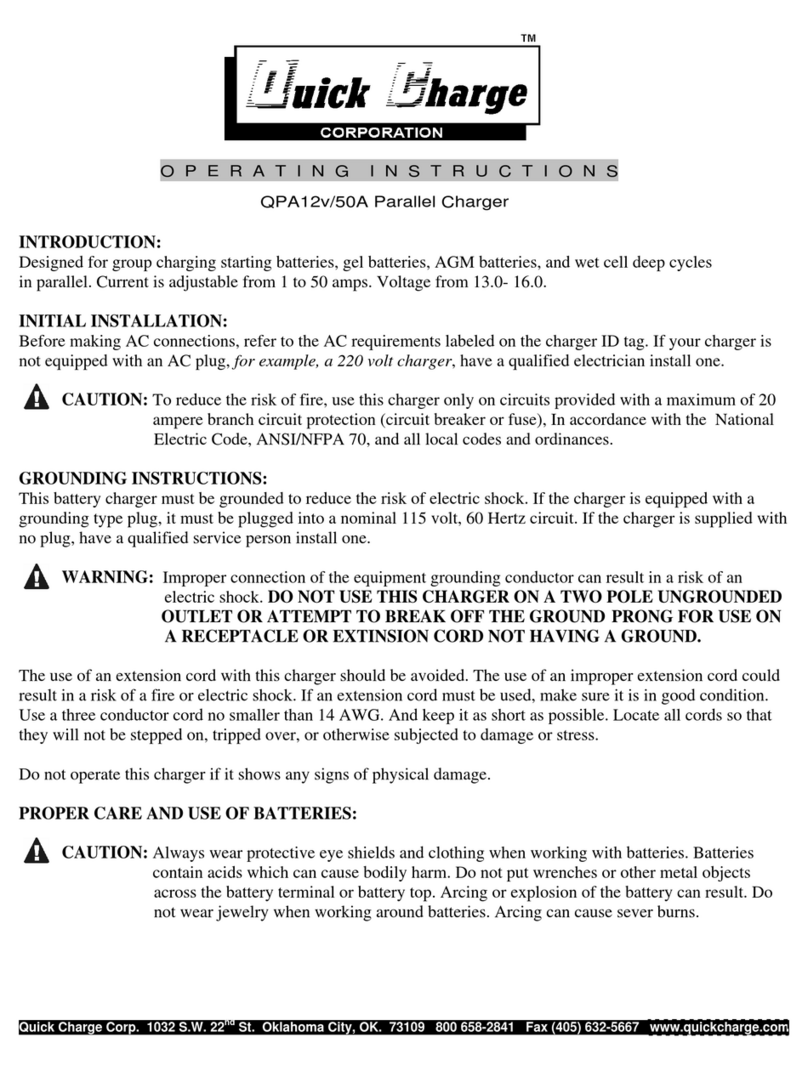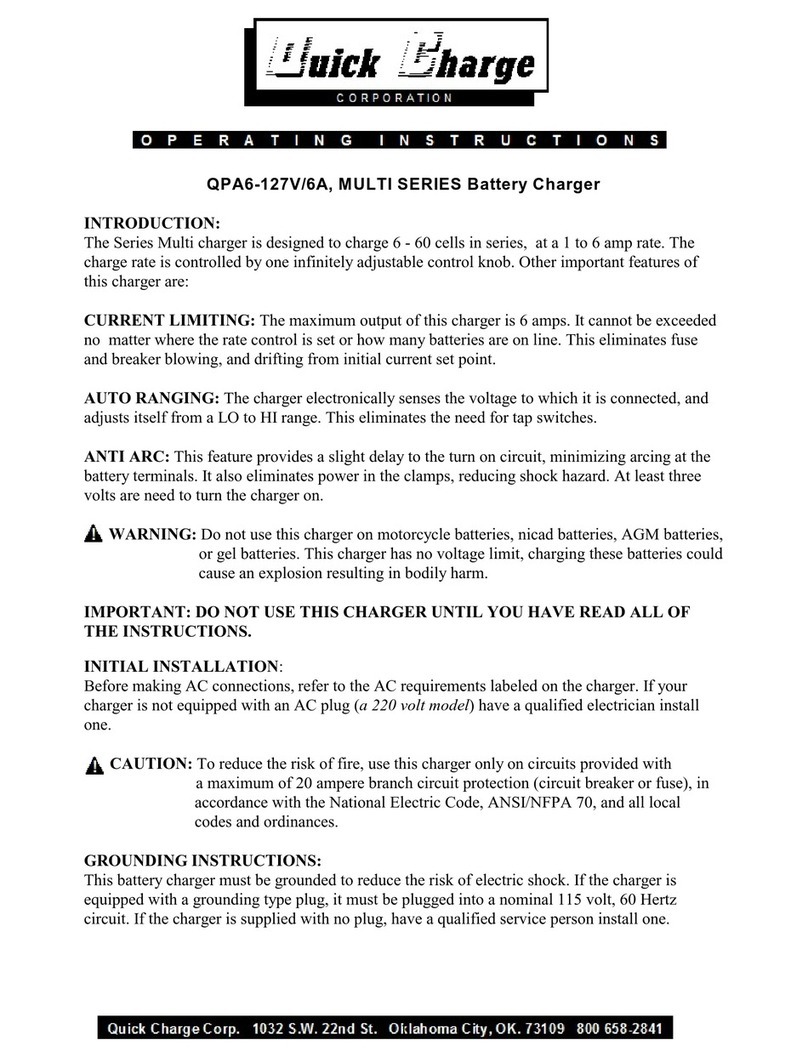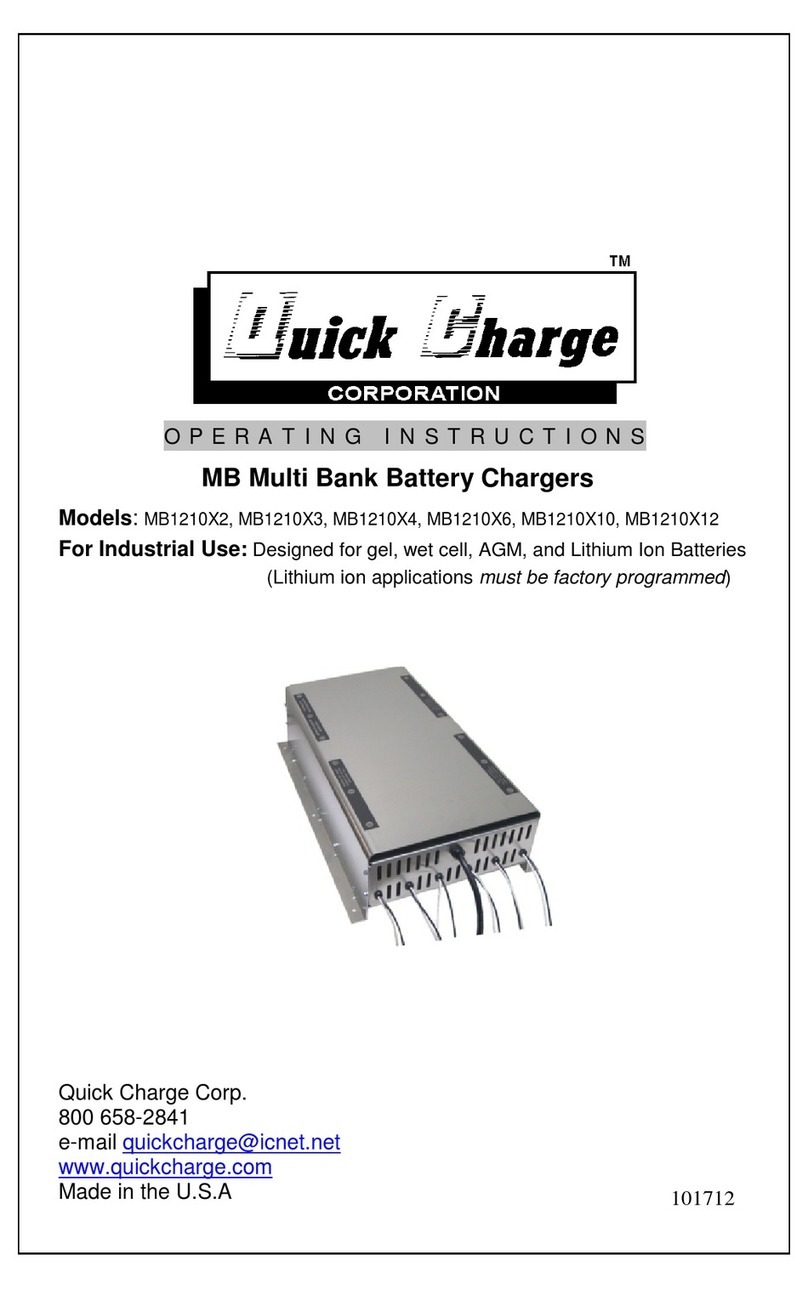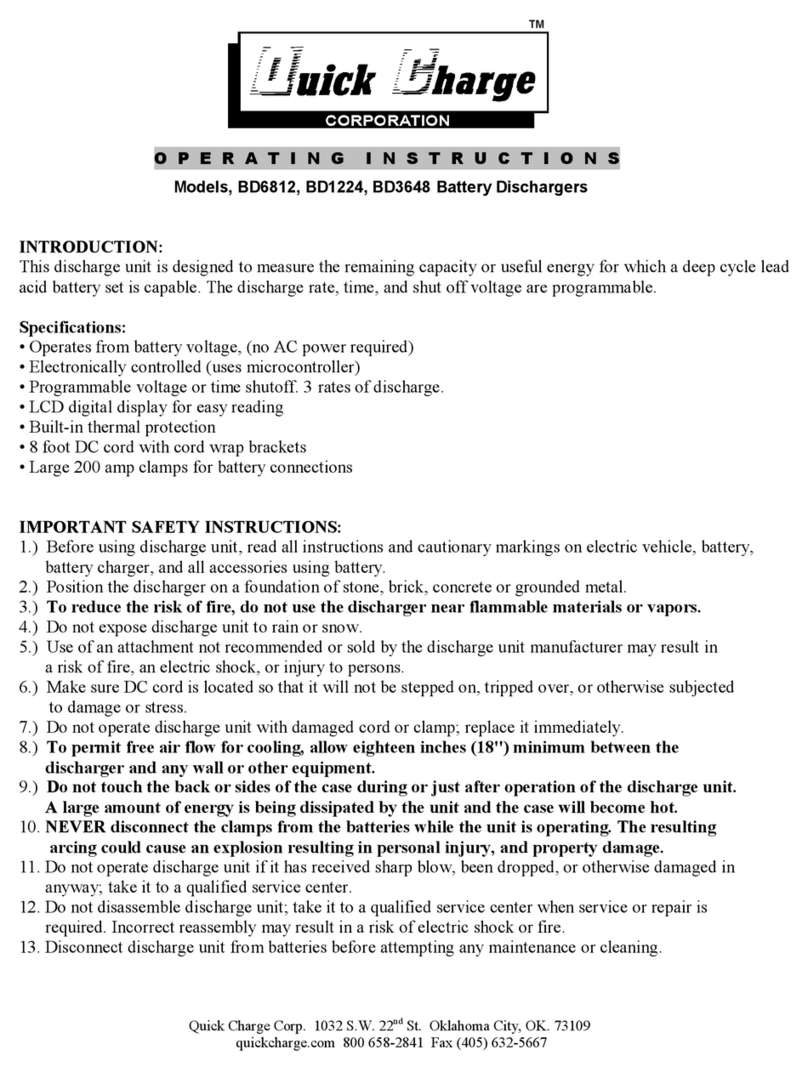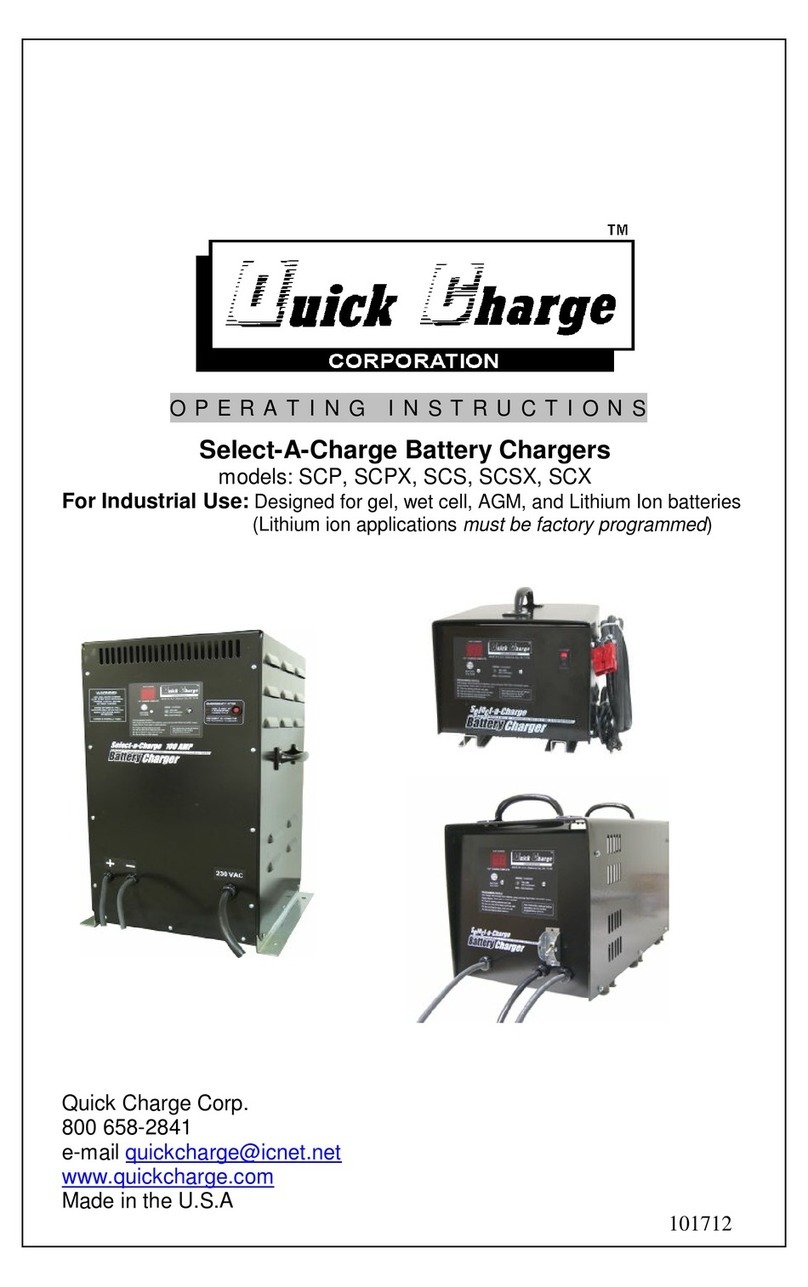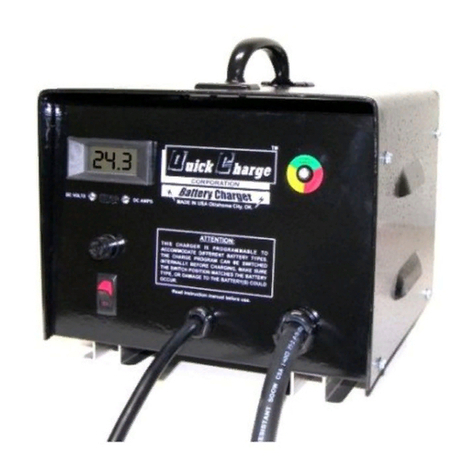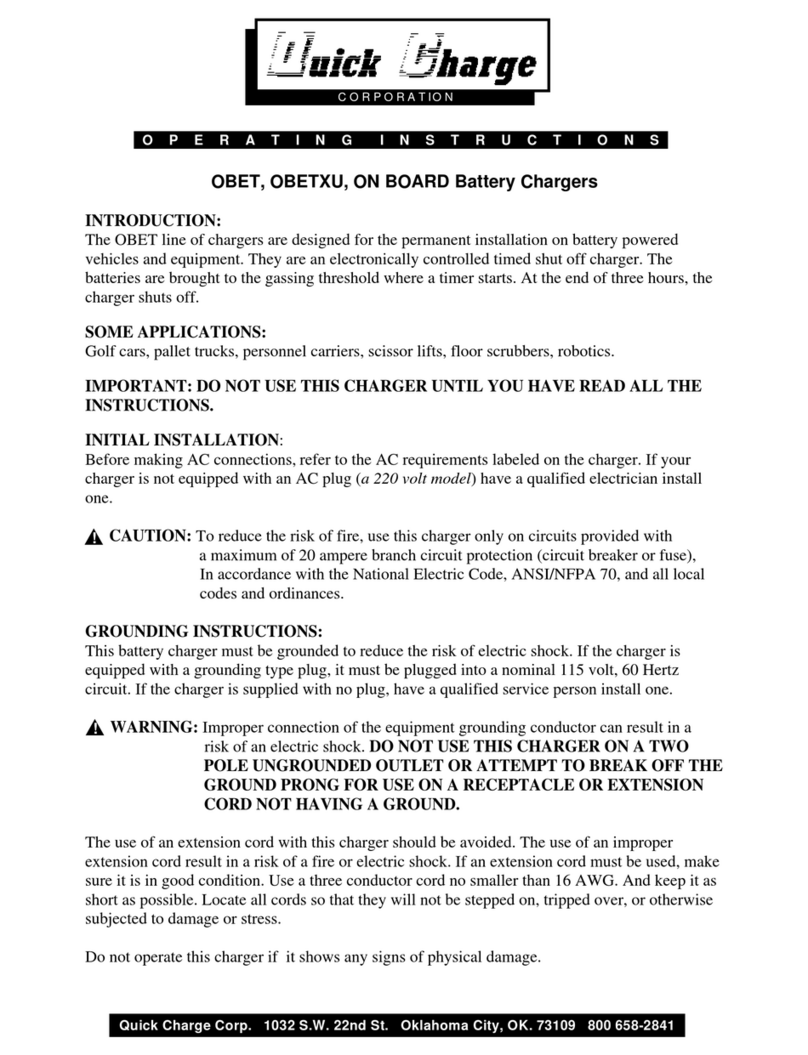
PRE CHARGE INFORMATION:
Mount the charger in the desired location, any orientation. Allow
space for the charger to dissipate heat, it will get hot while in use.
Do not seal the charger in an air tight compartment. Do not cover
the charger with any material. NOTE: The OB models are NOT
water proof, they are water resistant. This means they cannot
withstand immersion, or continuous exposure from pressure
washers, or heavy rain.
Connect the red charge lead to battery positive, black to
negative. But before, make sure the battery pack is of the same
voltage rating of the charger. If you are unsure, count the number
of cells on the battery pack and multiply by two. This figure should
be the same as the DC voltage rating of the charger. (see ratings
label on charger) Charging a battery with a lower voltage rating
than the charger will cause damage to batteries, charger, and can
create an explosive atmosphere.
Make sure the AC cord, DC output leads, terminals,
connectors, or clamps are all in good working condition. Do not
use the charger if there are any signs of stress or damage, or if
wires are cut or have damaged insulation. Using this charger with
any of these symptoms could result in a fire, property damage, or
personal injury. Have a qualified service person make the
necessary repairs. Repairs should not be made by people who are
not qualified.
Illustration of series and parallel battery connections:
Parallel Series
When batteries are connected in
Parallel the battery amp hour
capacity is additive and the
voltage remains the same.
Example: two 180 amp hour
12 volt batteries would equal
12 volts and 360 amp hour capacity
When batteries are connected in
Series the voltage is additive and
the battery amp hour
capacity remains the same.
Example: two 180 amp hour
12 volt batteries would equal
24 volts and 180 amp hour capacity
